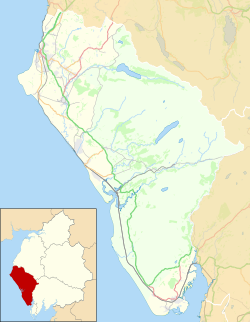| St James' Church | |
|---|---|
 St James' Church from the northwest | |
| 54°33′03″N3°35′00″W / 54.5508°N 3.5834°W | |
| OS grid reference | NX 977 184 |
| Location | High Street, Whitehaven, Cumbria |
| Country | England |
| Denomination | Anglican |
| Website | |
| History | |
| Status | Parish church |
| Founded | 1752 |
| Founder | Sir James Lowther |
| Dedication | Saint James the Greater |
| Consecrated | 25 July 1753 |
| Architecture | |
| Functional status | Active |
| Heritage designation | Grade I |
| Designated | 20 July 1949 |
| Architect | Carlisle Spedding (?) |
| Architectural type | Church |
| Style | Georgian |
| Completed | 1753 |
| Administration | |
| Province | York |
| Diocese | Carlisle |
| Archdeaconry | West Cumberland |
| Deanery | Calder |
| Parish | Whitehaven |
| Clergy | |
| Rector | Revd Robert Jackson |
| Laity | |
| Organist | Sigrid Hoesl-Leech |
| Churchwarden | Richard Last |
| Parish administrator | Michele Smith |
St James' Church is in High Street, Whitehaven, Cumbria, England, at the crossing with the top of Queen Street. It stands in an elevated position overlooking the town. [1] The church is an active Anglican parish church in the deanery of Calder, the archdeaconry of West Cumberland, and the diocese of Carlisle. [2] The church is recorded in the National Heritage List for England as a designated Grade I listed building. [3]

